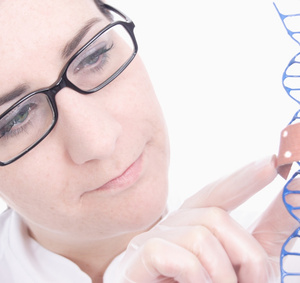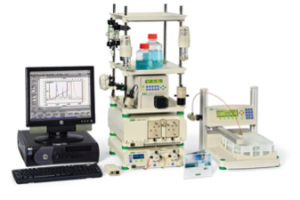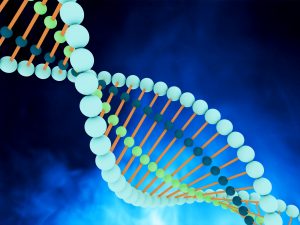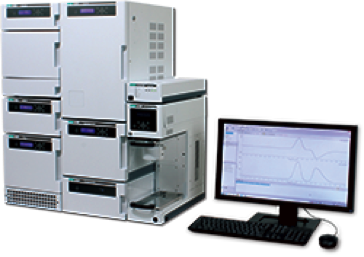Ion Chromatography
Ion chromatography allows for the separation of anions and cations in an ionic solution. The mobile phase consists of an ionic solution, which runs through the stationary phase, a column packed with ion exchange resin. Read More
Ion chromatography allows for the separation of anions and cations in an ionic solution. The mobile phase consists of an ionic solution, which runs through the stationary phase, a column packed with ion exchange resin. Read More
 New Research Products Abound in the First Half of 2018
New Research Products Abound in the First Half of 2018
We’re approximately half way through 2018, and the members of The Science Advisory Board continue to help drive innovation by sharing their opinions on new product concepts presented to them by the corporate sponsors of many of our studies. … Read more Read More
 Personalized Treatments and Vaccines Offer Hope for Beating Rare Cancers
Personalized Treatments and Vaccines Offer Hope for Beating Rare Cancers
Immunotherapy is undoubtedly one of the most influential and exciting fields of our time, with an ability to unlock the foundations of diseases and move one step closer to curing cancer. Technology and advanced research are allowing this science to flourish, and treatments have been developed targeting the ways cancer can mask itself and remain undetected in many cases. Read More
 Clinical Mass Spectroscopy Projected to Grow by 7.6% Over Next Five Years
Clinical Mass Spectroscopy Projected to Grow by 7.6% Over Next Five Years
We project the mass spectroscopy market to grow by 7.6% over the next 5 years. In this study, we will focus on the clinical applications for mass spec. Read More
 Tech Overview - Low Pressure Liquid Chromatography
Tech Overview - Low Pressure Liquid Chromatography
In our latest Tech Overviews article, we will discuss low-pressure liquid chromatography (LPLC) systems. Both types of chromatography separate components of a mixture by exploiting physical and chemical characteristics of the components present in the mixture. Like other types of chromatography, LPLC contains a mobile phase and a stationary phase. Read More
 Researchers Speak Out on CRISPR Products
Researchers Speak Out on CRISPR Products
Rarely in the scientific realm does a niche technique explode into a viable market worth billions of dollars over just a handful of years. When it does, the chaos that ensues is driven by the scrambling of life science product and service providers who vie with each other to secure market share. Read More
 What Scientists Want from CRISPR Companies
What Scientists Want from CRISPR Companies
Laboratories around the world are adopting the CRISPR/Cas9 genome editing technique for their research. Whether to engineer better cell lines for drug development or repair mutations that cause genetic diseases, researchers have only begun to tap into the tremendous potential that CRISPR/Cas9 promises. Consequently, the genome editing market, of which CRISPR/Cas9 already accounts for more than half, is poised to expand rapidly over the coming years. Read More
 Tech Overview – Supercritical Fluid Chromatography
Tech Overview – Supercritical Fluid Chromatography
Supercritical fluid chromatography (SFC) is one of the few “green” purification technologies in the research space today. The method is unique in that a supercritical fluid is used as the mobile phase. This is a substance that has been both compressed and heated beyond its critical point, and thus a distinct liquid or gas phase does not exist; instead it is a supercritical fluid. The fluid is unique in that it has the high density of a liquid but the low viscosity of a gas. Read on to learn more! Read More
 Life Scientists Online – Connecting, Influencing, Sharing.
Life Scientists Online – Connecting, Influencing, Sharing.
As generations pass by and new forms of communication develop, different preferences for social interaction are beginning to dominate. This has led to new trends in how scientists connect with brand executives, and will continue to affect how major organizations approach the life science market. Read More
 Emerging Trends in Communicating with Vendors
Emerging Trends in Communicating with Vendors
Significant changes are occurring in the life science market for consumers. Many are turning to digital sources for product information. The integrations of analytical instruments and sensors that monitor performance is becoming increasingly common in life science research laboratories. Multiple studies have shown that consumer engagement with visual content is significantly longer than with text and is more readily sharable than text-based marketing. Read More
Member Rewards
Earn points for contributing to market research. Redeem your points for merchandise, travel, or even to help your favorite charity.
Research Topics
Interact with an engaged, global community of your peers who come together to discuss their work and opportunities.
Connect
Tweets by @ScienceBoard



